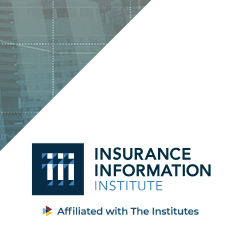
By Lewis Nibbelin, Contributing Writer, Triple-I
Current U.S. tariff policies – especially those targeting materials essential for repairing and replacing property after insured events – can complicate assessing and predicting risk. The future of these policies will depend on pending court rulings, creating even more uncertainty for insurers and their customers.
This uncertainty is compounded by a paucity of federal data during the current U.S. government shutdown.
“Normally, as we wrap up Q3, we have enough data as economists, policymakers, and business leaders to start thinking about what the year will look like by the end of it,” said Dr. Michel Léonard, Triple-I Chief Economist and Data Scientist, in a recent interview with Insurance Thought Leadership (ITL) – like Triple-I, an affiliate of The Institutes. “That’s not the case right now.”
In a typical year, Léonard explained, quarter-over-quarter GDP progresses minimally, facilitating more confident quarterly projections. Ongoing trade agreement ambiguity, however, means economists are “flying blind about GDP at the moment.”
Such uncertainty also influences inventory management behaviors, as companies up and down the supply chain that rely on imported goods have decided to stockpile ahead of tariff enactments at a record pace. Though replacement costs continue to rise more slowly than overall inflation, consumers will likely face rising costs as supplies dwindle, which could disrupt the P&C insurance industry’s positive momentum heading into next year.
Personal auto performance, for instance, saw considerable improvement, but reflected consumers purchasing vehicles to circumvent later post-tariff prices, potentially leading to “less growth in the second half of the year and certainly next year,” Léonard said.
Paul Carroll, ITL editor-in-chief, added that companies may delay investing in domestic manufacturing as tariff uncertainty persists, thereby further delaying potential economic boosts. He and Léonard agreed that these factors in combination suggest the full impact of tariffs will require more time to unfold.
Despite an unclear 2026 forecast, Léonard emphasized that insurers appeared to avoid “the worst-case scenarios” this year, demonstrating a “resilient U.S. economy, both in terms of growth and inflation.”
“We’re going to end the year most likely in a better place than we expected, and we should be very happy about that,” he concluded.
A complete transcript of their discussion is available here.

